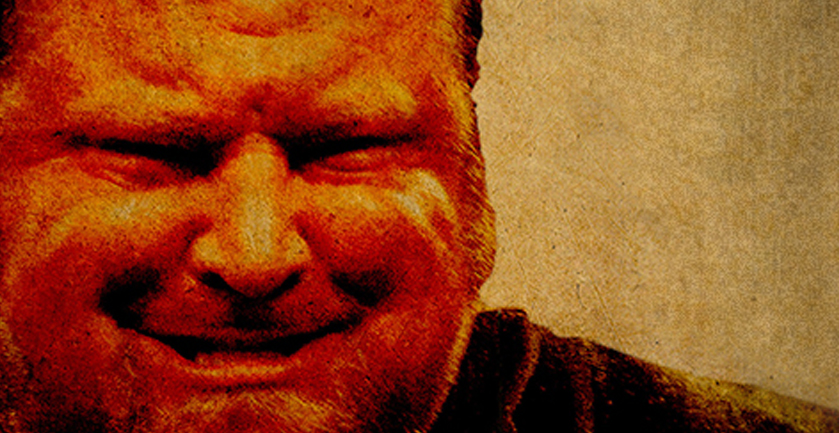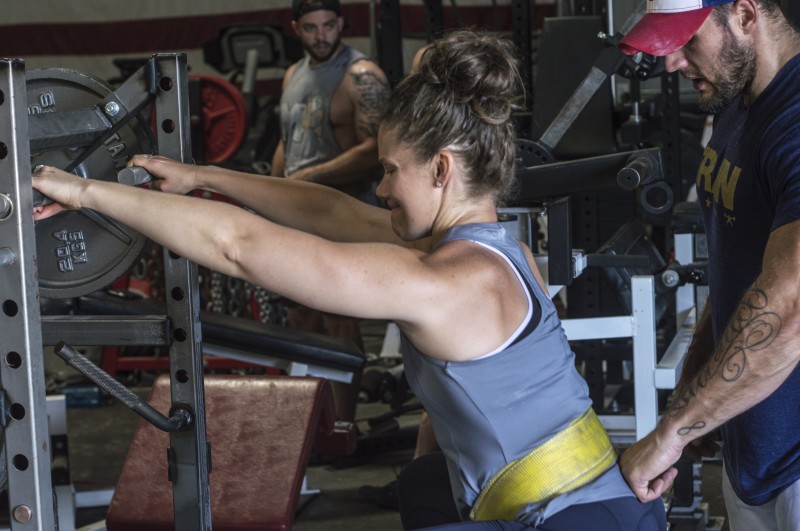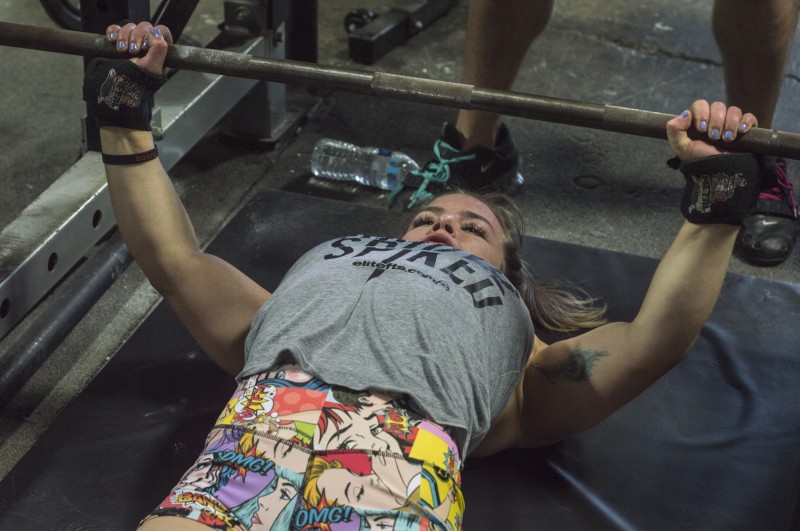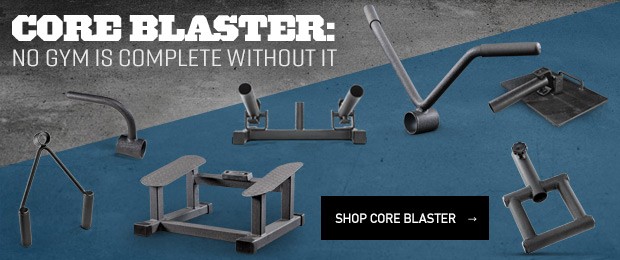
Yes, I admit it: my articles as of late have not been so much about training. If anyone feels like arguing I can defend the idea they are in fact related to training, but that is another article for another time. Improving and spending some time in public gyms again has definitely given me more ideas for articles more closely related to training. Feeling better has made it much easier for me to see a lot of these mistakes without getting too worked up, but they still stew around in my head, making me often ask why. I release this frustration through writing articles, and today I want to talk about supplemental exercises.
RECENT: Why I Need to Make a Change
Like so many others lifters from my generation, my first experience with lifting weights was through bodybuilding. The first written information I could get my hands on was bodybuilding magazines and books. These were readily available when information focused more on strength training was not. There was no social media or internet. Any strength training information I did get was in one of the bodybuilding magazines, and I found out many years later that things don’t get printed in those magazines unless they stick with their principles anyway. That is just the way it was back in the day. I got no complaints and I still ended up doing okay. I actually think in some ways it may have been better for me and taught me some things that I see a lot of lifters today miss. One of those things is concentration and focus — a mind-body connection. I especially see a lack of this when it comes to accessory or supplemental work (or whatever you want to call all the exercises after your main movement for the day).
I still remember reading and watching in videos how some of the bodybuilders would talk about this mind-body connection. You're not just doing a curl; you're feeling that bicep flex and you're intentionally squeezing it. You’re seeing in your mind's eye that bicep flexing and growing. With my experience and learning about visualization, this always made great sense to me. It was not just about holding a dumbbell and flexing my elbow. It was not just about going through the motion to get the reps. I was doing that exercise for a specific reason and to work a specific muscle, so if I did not feel that muscle being worked then I was doing it wrong. Maybe I was going too heavy so I was cheating by using other muscles. Maybe I was going too light to work the muscle like I wanted. This also meant I was not focusing enough on really flexing that muscle to make it work.
My focus was always on making sure I was not lifting weights just for the sake of lifting weights. I wanted to get bigger and stronger. There was a purpose. There was a goal.
Today I see lifters treat their supplemental training like they are just going through the motions. In some cases, lifters are putting in a lot of hard work and trying but with no focus on what is important. It is like stepping up to home plate and just swinging the bat without looking at the ball. Sure, you're swinging like a mad man, and if you do make contact it will fly, but what are the chances of you making contact? It just seems like a lot of wasted and uncontrolled energy to me. Just like I want all my energy focus to move the weight in a big lift, I want all my energy in the gym focused on my goals. Intelligent training takes a ton of energy and puts a ton of stress on the body. The recovery from that training takes, even more, nutrition, time, and energy. Don’t you want to be as efficient as possible to optimize all of that the best you can? It is one thing to do stuff that doesn’t help you achieve your goal and another when that stuff actually takes you further from it or slows down your progress to it.
I like to ask the question, “Are you working out or are you training?” If you’re just in the gym doing exercises or randomly following a program you have no real idea about then you're just working out. If you're just doing exercises without focusing on the technique of them or the muscles they are working, you're just working out. I don’t care if you are doing the exercises with a high energy level. If you're in the gym trying to achieve a goal and you have some thought in what you're doing then you're training. This means accessory and supplemental work too. It means everything you do is done to help you meet your goal. This means focusing on technique and the muscles that the given exercise works. This means you pick exercises that hit weak points or that are designed to help the muscle used in movement you have a goal for. This means there is a thought process beyond "lift hard and heavy.” Maybe that thought process isn’t always right or maybe you're trying something new because you have an educated-type guess it might help, but there was some thought before attempting or trying these things. It wasn’t just, “Hey, I saw this video of Joe Blow doing this and I am going to do it now” without having any idea what it was done for or how to perform it correctly.

I also have a habit of asking lifters why they are doing exercises, sets, reps, percentages, etc. This quickly tells me if they have put any thought into these things. I get very frustrated when I get no reply or a shoulder shrug. Even if you have a coach or are following a program, you should have some idea why you are doing what you're doing. I mean, I was always curious why my coaches had me do whatever I was doing. I wanted to understand so I could be better as an athlete and so that I could put my own ideas into it and better help that coach guide me. In my opinion, a good coach should have no problem explaining these things and should want his or her athletes to understand it all. If you're going to be coached, I always say to listen to them and do what they say. At least give them time to see if it works and give it 100%. For me, this means asking questions and doing your best to understand it. Sometimes it may not make sense to you, but you should do it anyway. If you picked this person to coach you then you should trust them and maybe it will make sense after doing it a while. You have to use your brain if you want to build optimal muscle and strength. So even if you’re following a program or you're getting coached, you should be trying to learn.
As powerlifters, we tend to put most of our energy—and apparently thought—into our main lift of the training session. This is usually some max effort movement for the squat, bench, or deadlift. I usually still do not see the kind of attention on focus and technique that I would like, but there is way more than what I usually see on the supplemental exercises. Supplemental exercises are not only about strength. They also provide a great opportunity to reinforce the technique we need on the main lifts. For instance, anytime I do anything on a bench I use my full bench setup position. If I am doing dumbbell flyes, I set up just like a bench. I arch, tuck my shoulder blades together, pull my shoulders down, and flex my lats. When I do my shoulder work, I do the same thing: I flex my entire upper back with shoulders together and down. If I am doing any lift with a bar on my back, I set it up just like I do for a squat, again, squeezing my upper back and making sure to get my low back setup correctly. I always use my core correctly no matter what exercise I am doing. I always work on building pressure and staying tight on all exercises. These are principles you should be following all the time until they become habit.
WATCH: Table Talk with Dan Green — How to Choose Secondary and Accessory Training Movements
Understanding the technique of each individual lift is so important. Triceps work is a great example for this. I too often see lifters doing improper technique on triceps work that was designed to help strengthen the inner head of the triceps. It is the strongest and most important part of the triceps for a big bench. Well, lifters do these movements with their elbows out and end up working that pretty little horseshoe-shaped outer head. They also do not lower the dumbbell on the anterior delt and roll it back to engage the lats. This is an important part of the movement to simulate the muscle firing of a bench press.
I often see lifters doing all kind of triceps work trying to help their lockout, but the only rep they lock out is the last one. This same thing happens with lower body posterior chain work. Lifters will be doing good mornings to work their posterior chain but instead of pushing their butt back they just bend forward, putting most of the strain on the low back. I can go on and on, listing all kinds of supplemental exercises I see lifters screw up. The point is that all of these exercises were designed with a purpose and a correct way to do them. They are no different than the main lifts. You want to do those the most efficient way and allow for the strongest muscle groups to be used so that the most weight can be lifted. Well, supplemental work deserves the same focus and energy to make sure you get the most out of them and produce the biggest carryover to the main lifts.
Never underestimate the importance that supplemental or accessory exercises can have. It is not one big blow that shapes a flat piece of metal into a motorcycle fender (modern equipment withstanding); it is all the little blows that hammer out a quality custom fender. These exercises are important weapons we can use to bring up weaknesses and increase your main lifts — and isn’t that what powerlifting is all about? Plan them out thoughtfully and skillfully. Perform them thoughtfully and skillfully. Give them the same focus and concentration you give your main lifts. Do this and you will see great results.
So start treating your supplemental work like the weapon it is. Give it the respect a good weapon deserves and it will not let you down.












1 Comment